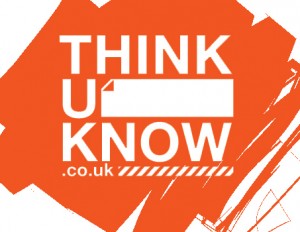
Staying Safe Online
Friday 30th October 2015Karen Jay, Director of Children’s & Youth Work continues our series on Digital Tools and looks at how we can help keep our children and young people safe online.
What advice would you give to a 14 year old who told you this at a BB night?
“I went out to the entrance gate of my school yesterday and I stopped the first person that went by. I told him my name, my age, my address, my personal problems, what I’d had for lunch, where I was going tonight and who my best friends were. I gave him pictures of me on holiday, with my mates, my younger sister and on the school trip. He said he “liked” what I had to say and then followed me…”
Most young people would be far too streetwise to entrust their personal details to a stranger in “real” life but somehow when we’re online it feels safer. We know from research that teenagers consistently underestimate the risks they can face when online. The problem for most adults is that we can’t keep up with the pace of change in social networking, and as soon as “we” discover a networking site “they” move on to another.
CEOP (Child Exploitation and Online Protection Centre) is a national crime agency where you can report online abuse. They also produce excellent resources for different age groups on their website “thinkuknow”
Check out their resources at www.thinkuknow.co.uk
These resources are perfect if you want to put something into your programme for Anchor Section, Junior Section, Company Section or Seniors. There are also sections for parents, trainers and teachers.
Here’s what CEOP says about how online abuse typically happens:
- An offender makes contact with a young person. This can happen anywhere online, including on a social network, in a chatroom, in a game or even on their mobile.
- The offender begins a conversation and tricks the young person into sending them an indecent picture, appearing naked or performing sexual acts on webcam. They trick them in a variety of ways including: pretending to be a girl or boy of the same age, pretending to be someone the child knows, flirting with them or sending them sexual pictures or videos.
- The offender records the webcam footage. They then threaten to share the video with the young person’s friends or family if they don’t perform more sexual acts. Some young people have been threatened for money or told to hurt themselves.
This has happened to hundreds, possibly thousands, of young people in this country.
This is sexual abuse. The emotional impact can be devastating. A number of young people have attempted suicide as a result of finding themselves in this situation.
So, realistically, what tools can BB leaders use to help children and young people to stay safe online, assess their own safety and minimise risk?
Technical Tools
Parental controls
Privacy settings
Reporting Tools
Report abuse buttons
CEOP reporting page
Education Tools
Thinkuknow
BB programme activities
Most social network sites will have privacy settings. It’s a good idea to read these and check that young people understand what privacy settings mean.
As an example Facebook offers these options:
- Who can search for you – this means that when people search your name on a site, your profile does not come up.
- Who sees what – this means that you can control the information you share, like your photos or ‘wall’ posts. You can usually restrict this to friends only, friends of friends, certain groups of friends, or everyone. We would recommend that for young people it is restricted to friends only.
- Who can post information about you – some sites enable others to ‘tag’ photos of you or share other information about you, like your location. Many sites enable you to restrict people’s ability to do this.
It is important that you stay up-to-date with the privacy settings that young people use and help them stay in control of their profile.
For more information about privacy settings www.facebook.com/help/privacy
“Talking about these issues with your young people is really important. Our Company Section and Seniors members are much more aware of keeping themselves safe online. A group of Seniors is now planning an activity for Juniors so that they have a much better understanding.”
– Johanna Geddes, 1st Thurso
Above all, the relationship of trust you’ve built with the young people and children in your Company is the best defence against online abuse or bullying. If they trust you enough to tell you if something has gone wrong or they’re being bullied, then you can take advice. Even if you don’t “get” social networking you can get in touch with us at BBHQ, contact CEOP, your Church safeguarding person or your local police.
For more information visit ceop.police.uk/safety-centre/
If you have any questions then get in touch at karen.jay@boys-brigade.org.uk or call +44 (0) 1442 231 681





